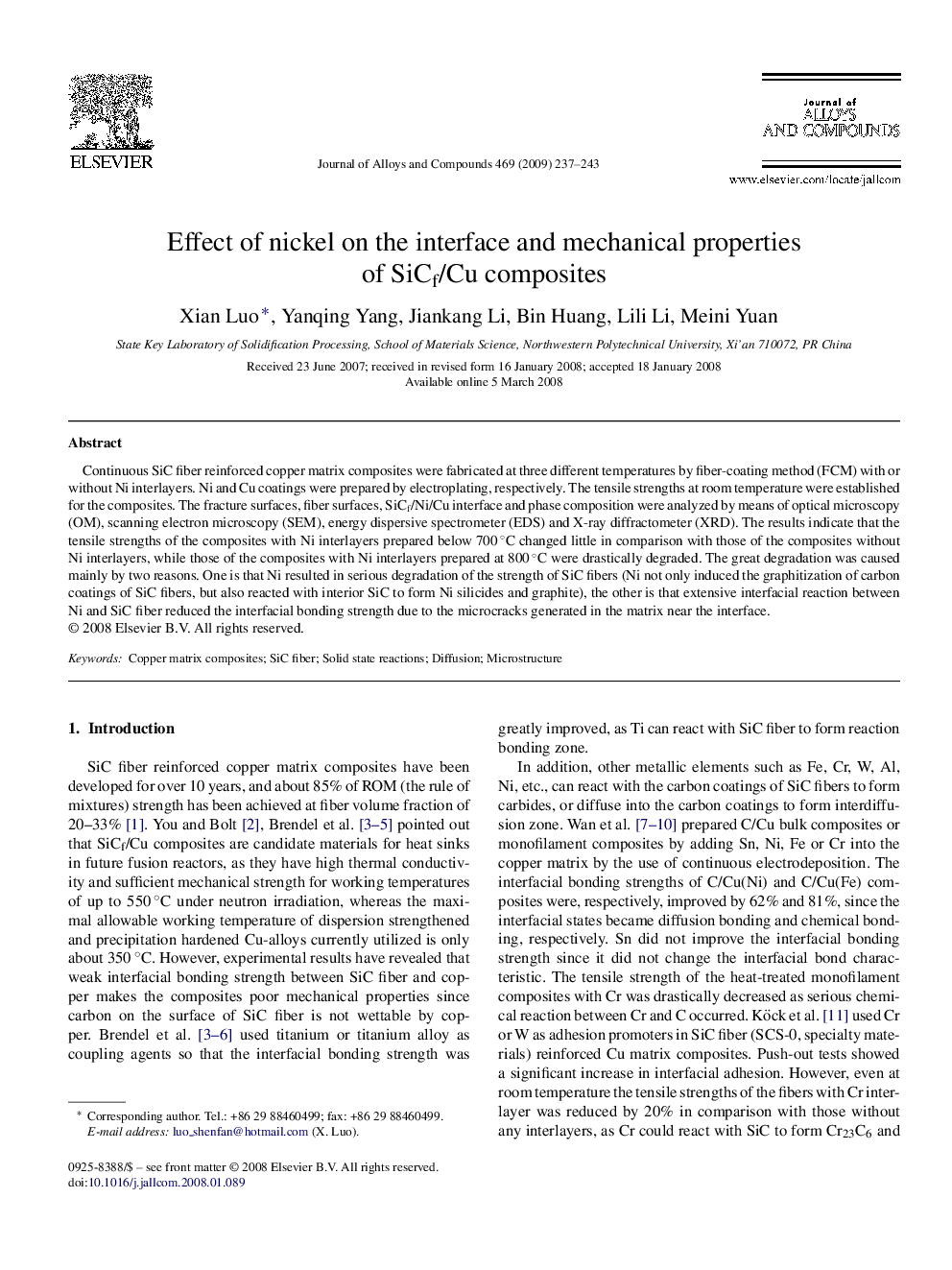| Article ID | Journal | Published Year | Pages | File Type |
|---|---|---|---|---|
| 1623264 | Journal of Alloys and Compounds | 2009 | 7 Pages |
Continuous SiC fiber reinforced copper matrix composites were fabricated at three different temperatures by fiber-coating method (FCM) with or without Ni interlayers. Ni and Cu coatings were prepared by electroplating, respectively. The tensile strengths at room temperature were established for the composites. The fracture surfaces, fiber surfaces, SiCf/Ni/Cu interface and phase composition were analyzed by means of optical microscopy (OM), scanning electron microscopy (SEM), energy dispersive spectrometer (EDS) and X-ray diffractometer (XRD). The results indicate that the tensile strengths of the composites with Ni interlayers prepared below 700 °C changed little in comparison with those of the composites without Ni interlayers, while those of the composites with Ni interlayers prepared at 800 °C were drastically degraded. The great degradation was caused mainly by two reasons. One is that Ni resulted in serious degradation of the strength of SiC fibers (Ni not only induced the graphitization of carbon coatings of SiC fibers, but also reacted with interior SiC to form Ni silicides and graphite), the other is that extensive interfacial reaction between Ni and SiC fiber reduced the interfacial bonding strength due to the microcracks generated in the matrix near the interface.
